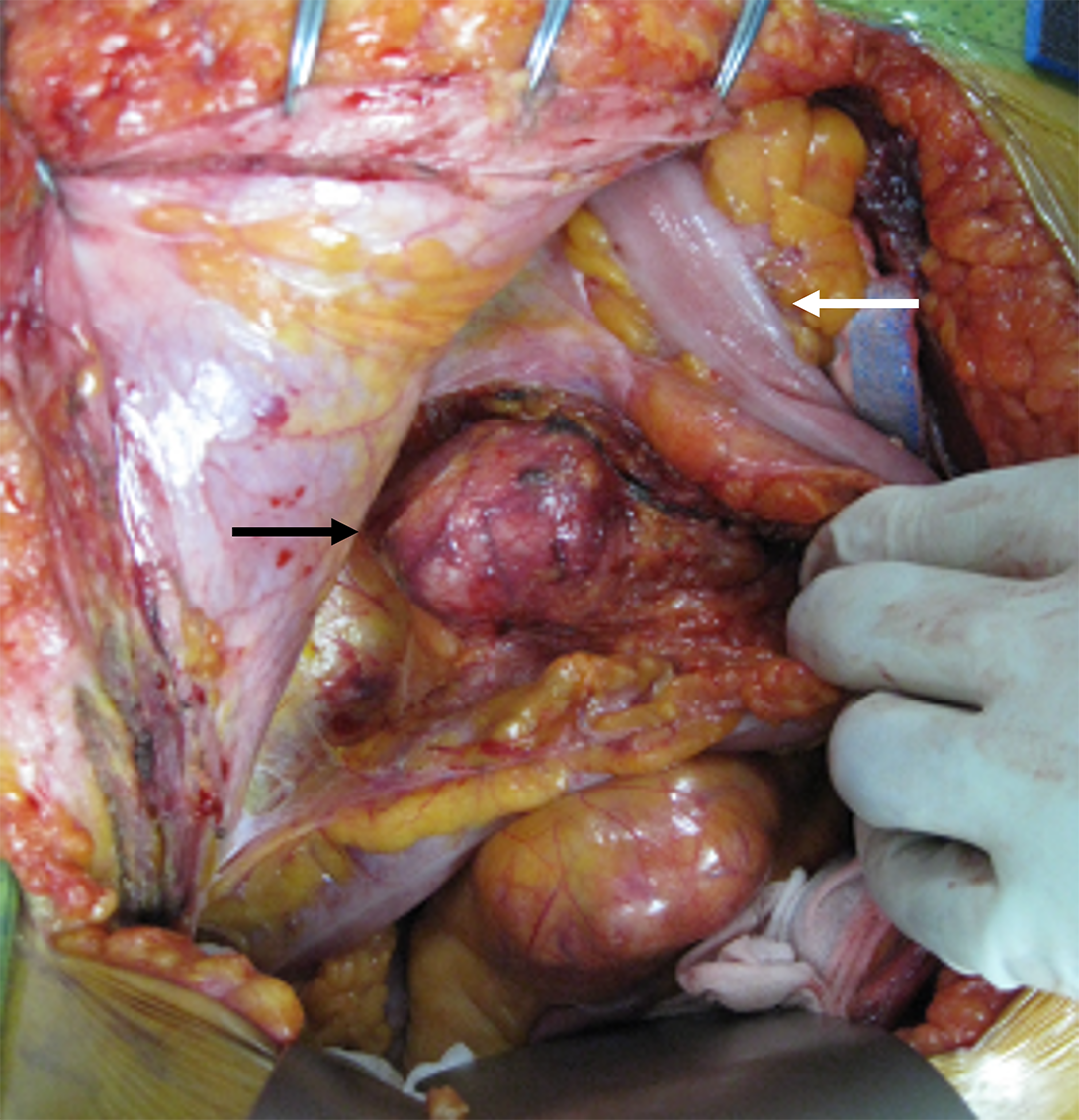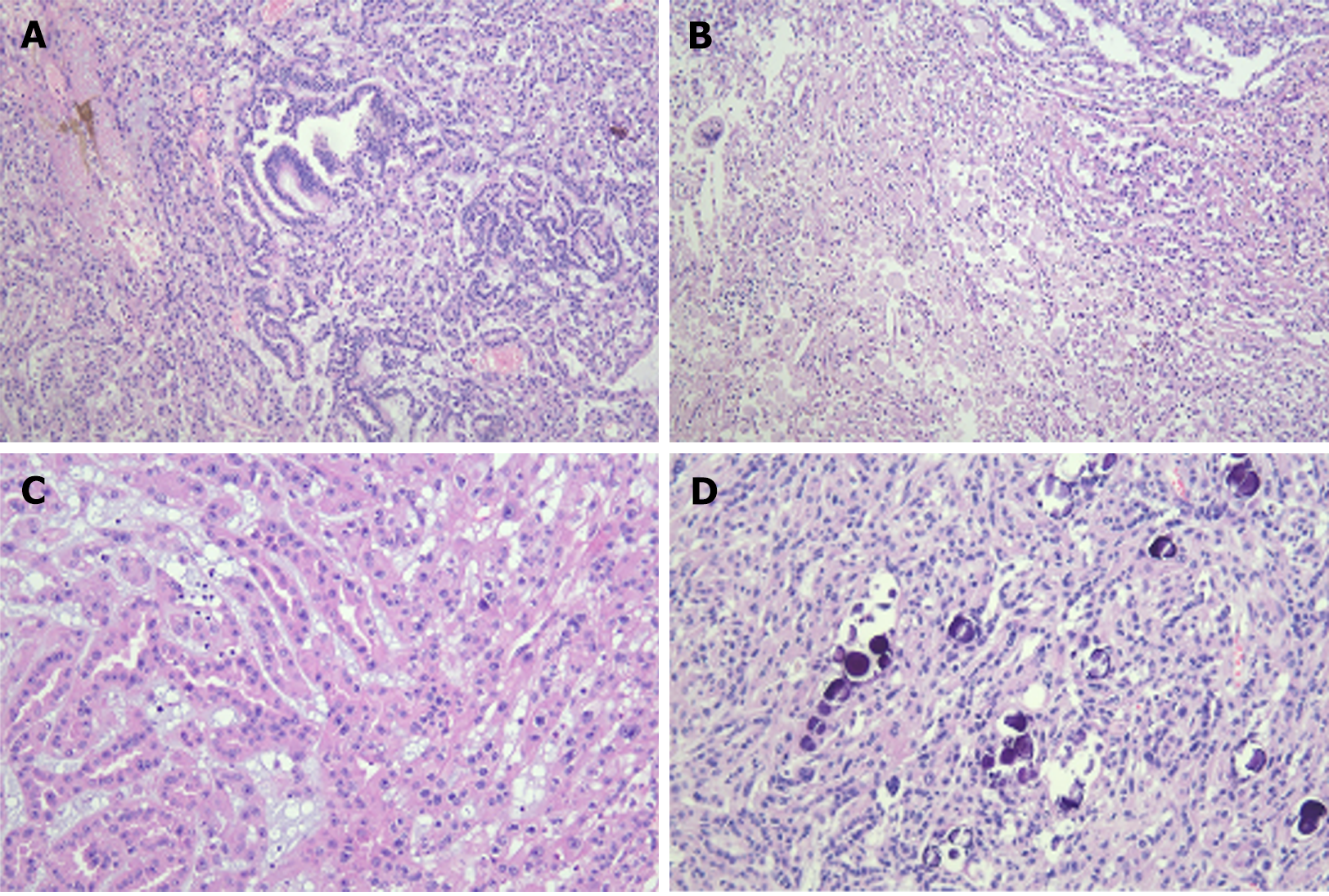Copyright
©The Author(s) 2024.
World J Clin Cases. Jul 16, 2024; 12(20): 4412-4418
Published online Jul 16, 2024. doi: 10.12998/wjcc.v12.i20.4412
Published online Jul 16, 2024. doi: 10.12998/wjcc.v12.i20.4412
Figure 1 Magnetic resonance imaging of the abdomen.
A: The T2-weighted coronal image shows three distinct oval masses in the left retroperitoneum (indicated by orange arrows), exhibiting a high signal intensity and a well-enhanced pattern; B: The image on the left displays diffusion-weighted transverse images of three retroperitoneal masses (indicated by orange arrows), while the image on the right shows the corresponding gross features of three specimens. The diffusion-weighted transverse images reveal mild restricted diffusion.
Figure 2 Intraoperative findings show a distinct, well-demarcated round mass (black arrow) after dissecting the descending colon (white arrow).
Figure 3 Immunohistochemical results (×100).
A: Tumor cells show diffuse cytoplasmic positivity for pan-cytokeratin; B: Vimentin; C: Cytokeratin 7; D: α-methylacyl coenzyme A racemase.
Figure 4 Microscopic findings of hematoxylin and eosin staining.
A: Tubulopapillary structures with some microcystic changes (×100); B: Papillary structures associated with accumulation of foamy histiocytes (×100); C: Tubulopapillary structures lined by eosinophilic epithelial cells with high-grade nuclear features of Fuhrman nuclear grade 3-4 (×200); D: Psammomatous calcific bodies scattered over tubular lumina and interstitial stroma (×200).
- Citation: Kim TN, Kim A, Kim KB, Lee CH. Ipsilateral retroperitoneal papillary renal cell carcinoma 27 years after simple nephrectomy for a renal abscess: A case report. World J Clin Cases 2024; 12(20): 4412-4418
- URL: https://www.wjgnet.com/2307-8960/full/v12/i20/4412.htm
- DOI: https://dx.doi.org/10.12998/wjcc.v12.i20.4412












